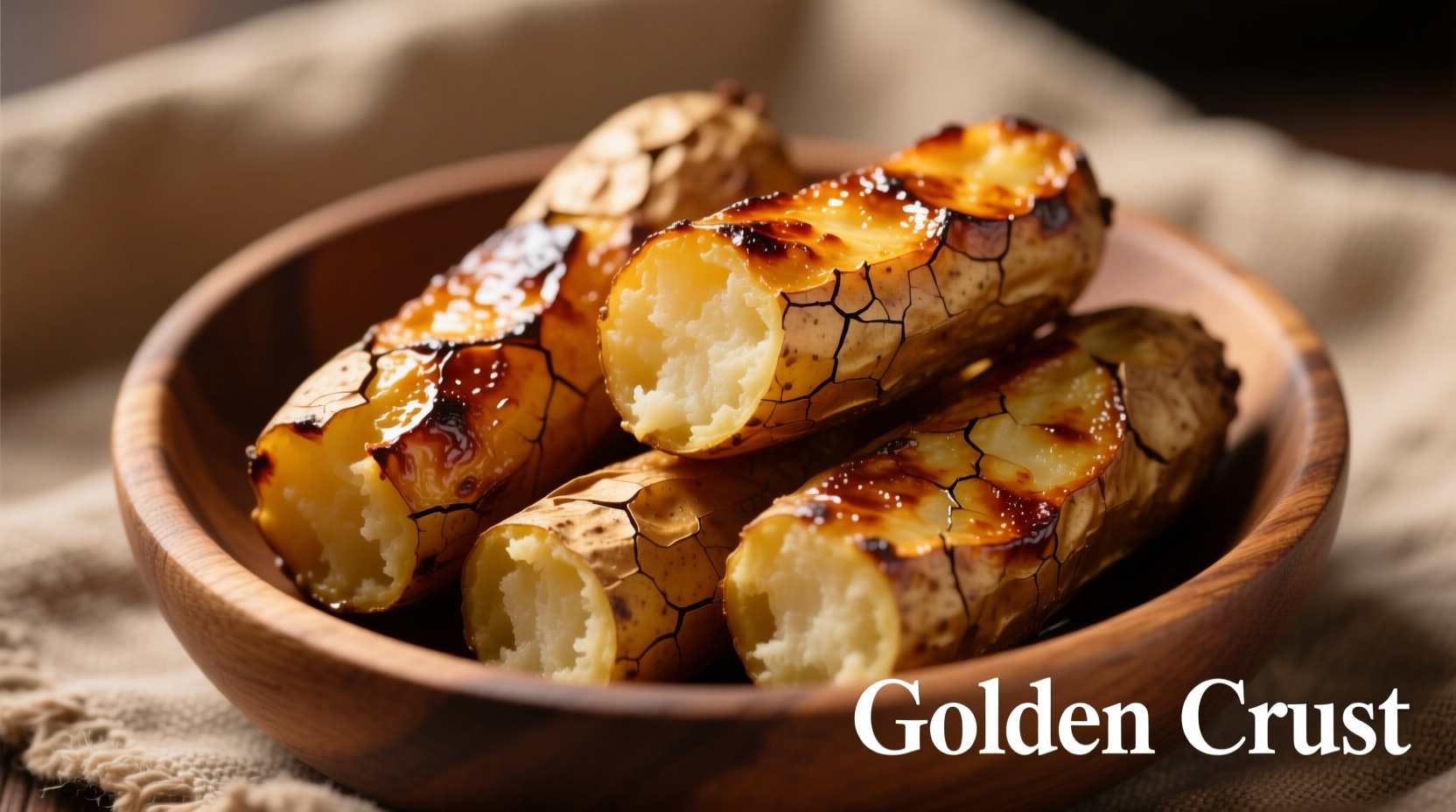Have you ever wondered why some potato preparations deliver perfect crispness outside with fluffy interiors while others turn out soggy or uneven? The secret often lies in the humble potato log technique—a preparation method that transforms ordinary spuds into extraordinary culinary elements. As a professional chef with decades of experience across European kitchens, I've discovered that understanding this simple yet sophisticated approach unlocks consistent, restaurant-quality results every time.
What Exactly Are Potato Logs?
Potato logs represent a specific preparation technique where potatoes are shaped into uniform cylindrical forms before cooking. Unlike diced or wedge cuts, logs maintain structural integrity while maximizing surface area for optimal browning. This method works particularly well for:
- Roasting applications where even cooking is essential
- Creating the foundation for potato-based appetizers
- Preparing consistent portions for professional service
- Developing superior texture contrast between exterior and interior
The technique's effectiveness stems from the uniform shape that allows heat to penetrate evenly while creating maximum surface area for caramelization—critical for developing complex flavor compounds through the Maillard reaction.
Historical Evolution of Potato Log Preparation
While potatoes arrived in Europe in the 16th century, the specific log preparation technique evolved alongside European culinary refinement:
| Time Period | Development | Key Influences |
|---|---|---|
| 1570-1700 | Initial European adoption of potatoes | Spanish explorers introduced potatoes; initially viewed with suspicion |
| 1700-1800 | "Bâtonnet" cut development in French cuisine | Marie-Antoine Carême standardized precise vegetable cuts |
| 1800-1900 | Refinement for restaurant service | Auguste Escoffier incorporated potato logs into haute cuisine |
| 1900-Present | Modern adaptations for home cooking | Cooking shows and food science research optimized techniques |
According to research from the Oxford Symposium on Food and Cookery, the transition from rustic potato preparations to precise log cutting reflected broader culinary trends toward standardized portioning and professional technique refinement throughout the 19th century.
Why Potato Variety Matters More Than You Think
Not all potatoes work equally well for log preparation. The starch content directly impacts your results:
- High-starch potatoes (Russet, Idaho): Ideal for roasting logs as they develop crisp exteriors while maintaining fluffy interiors
- Medium-starch potatoes (Yukon Gold): Best for boiled or steamed logs where you want more structural integrity
- Low-starch potatoes (Red Bliss, Fingerling): Generally unsuitable for traditional log preparation due to higher moisture content
Research from the American Journal of Potato Research confirms that Russet potatoes, with their 20-22% dry matter content, provide the optimal balance of starch and moisture for achieving the desired textural contrast in log preparations.
Essential Equipment Checklist
While you can create potato logs with basic kitchen tools, these items significantly improve your results:
- Sharp chef's knife or mandoline slicer for uniform cutting
- Microplane grater for moisture extraction
- Heavy-bottomed roasting pan for even heat distribution
- Instant-read thermometer to verify internal temperature (205°F/96°C)
- Clean kitchen towel for moisture control
Step-by-Step Preparation Guide
Follow these professional techniques for perfect potato logs every time:
- Selection and preparation: Choose uniform Russet potatoes (about 2 inches in diameter) and scrub thoroughly
- Cutting technique: Slice potatoes into 3-inch lengths, then cut each section into ½-inch thick planks before shaping into logs
- Moisture management: After cutting, place logs on a clean towel and gently press to remove excess surface moisture
- Oil application: Toss logs in 1 tablespoon oil per pound of potatoes—never pour oil into the pan first
- Seasoning strategy: Add salt after cooking to prevent moisture extraction during roasting
- Roasting method: Arrange logs in a single layer with space between pieces on a preheated 425°F (220°C) oven
- Turning technique: Rotate logs only once during cooking to develop proper caramelization

Contextual Boundaries: When Potato Logs Shine (and When They Don't)
Understanding the limitations of this technique prevents common kitchen disappointments:
- Ideal applications: Roasting, grilling, and air-frying where dry heat creates optimal browning
- Limited applications: Boiling or steaming where uniform shape offers minimal advantage
- Avoid completely: Pressure cooking or sous vide where texture development doesn't occur
- Professional tip: For restaurant-quality results, par-cook logs in 300°F (150°C) oven for 15 minutes before finishing at high heat
According to culinary research published by the Culinary Institute of America, the potato log technique delivers optimal results only when the surface temperature reaches at least 310°F (154°C)—the threshold for proper Maillard reaction development.
Troubleshooting Common Issues
Even experienced cooks encounter these challenges with potato logs:
- Soggy exterior: Caused by overcrowding the pan or insufficient preheating—always leave space between logs
- Uneven cooking: Results from inconsistent sizing—use a ruler for uniform cuts
- Burning before cooking through: Oven temperature too high—verify with independent thermometer
- Sticking to pan: Insufficient oil or pan not hot enough before adding potatoes
Professional Variations Worth Trying
Elevate your potato logs with these chef-approved enhancements:
- Herb-infused oil: Steep rosemary and thyme in warm oil before tossing with logs
- Spice crust: Add ¼ teaspoon smoked paprika per pound for depth without overwhelming flavor
- Cheese finish: Sprinkle finely grated Pecorino Romano during the last 5 minutes of cooking
- Acid balance: Finish with a light drizzle of sherry vinegar after cooking to cut richness
Serving and Storage Guidance
Maximize your potato logs' potential with these professional tips:
- Rest logs for 5 minutes after cooking to allow internal steam to redistribute
- Serve immediately for optimal texture—potato logs lose crispness quickly
- Store leftovers in an airtight container in the refrigerator for up to 3 days
- Reheat in oven or air fryer at 375°F (190°C) for best texture restoration
- Avoid microwave reheating which creates uneven, soggy results











 浙公网安备
33010002000092号
浙公网安备
33010002000092号 浙B2-20120091-4
浙B2-20120091-4